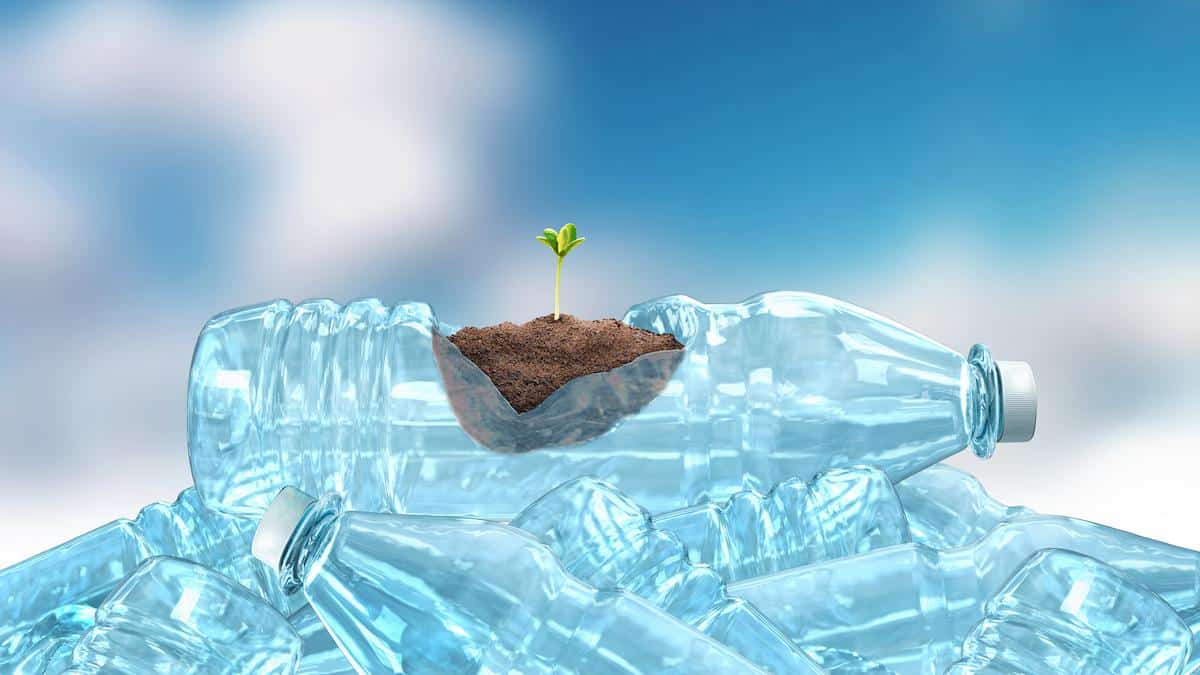

With new technology, plastic can do more than hold a growing plant — it can fertilize it. CHRISTOPH BURGSTEDT / SCIENCE PHOTO LIBRARY / Getty Images
Single-use plastics are a major environmental problem, polluting everything from the Mariana Trench to Mount Everest.
Because only 14 percent of plastics are actually recycled, many experts and advocates argue that the solution to the problem is to create a circular system whereby plastics are reused instead of discarded. Towards this end, a Tokyo-based research team has developed a way to convert bio-based plastics into fertilizer. But they say their findings have even broader implications for plastic reuse.
“We are convinced that our work represents a milestone toward developing sustainable and recyclable polymer materials in the near future,” study co-author and Tokyo Institute of Technology assistant professor Daisuke Aoki said in a press release. “The era of ‘bread from plastics’ is just around the corner.”
The research, published in Green Chemistry Thursday, focused on the bio-based plastic poly(isosorbide carbonate) (PIC).
Bio-based plastics are plastics made from biomass that have been proposed as a more sustainable alternative to petroleum-based plastics. PIC in particular is made from a monomer called isosorbide (ISB), a non-toxic glucose byproduct. ISB can be turned into fertilizer through a process called ammonolysis: Ammonia is used to separate the carbon connecting the ISB monomers. This creates urea, which is a nitrogen-rich substance that makes a popular fertilizer.
While scientists have long been aware of ammonolysis, the researchers sought to complete the reaction using as little energy and as few organic solvents as possible. First, they tried the reaction in 30-degree-Celsius water at atmospheric pressure. They were able to create urea, but the reaction was not complete within 24 hours and the PIC had not fully degraded. However, they found that increasing the water temperature to 90 degrees Celsius led to a complete reaction within six hours.
“The reaction occurs without any catalyst, demonstrating that the ammonolysis of PIC can be easily performed using aqueous ammonia and heating,” Aoki said in the press release. “Thus, this procedure is operationally simple and environmentally friendly from the viewpoint of chemical recycling.”
Tokyo Institute of Technology
The Tokyo-based team is not the first to transform plastics into fertilizer. Startup Neptune Plastic developed a plastic from food-grade material that could be composted in a home garden, as Forbes reported at the time.
However, there is some debate as to whether or not bio-based plastics are really an environmentally friendly solution to the plastic pollution crisis. For one thing, they do not always biodegrade as quickly as advertised. A UN report concluded that they broke down too slowly in the ocean to be a meaningful alternative.
Circular solutions like the one proposed by Aoki’s team would resolve this problem, of course. However, there is still a concern that growing biomass for bio-based plastics could contribute to the climate and biodiversity crises by taking up valuable land area that could be used for carbon storage or habitat.
“To satisfy the land requirement to replace plastics used for packaging globally, 61 million ha [hectares] would be needed for planting bio-based plastic feedstock, an area larger than France,” the authors of a recent study on climate change and plastic pollution wrote.
- Scientists Develop Truly Biodegradable Plastics - EcoWatch
- 'They Say It Can't Be Done': Documentary Highlights ...
- 5 Sustainable Alternatives to Plastics - EcoWatch

 233k
233k  41k
41k  Subscribe
Subscribe 
